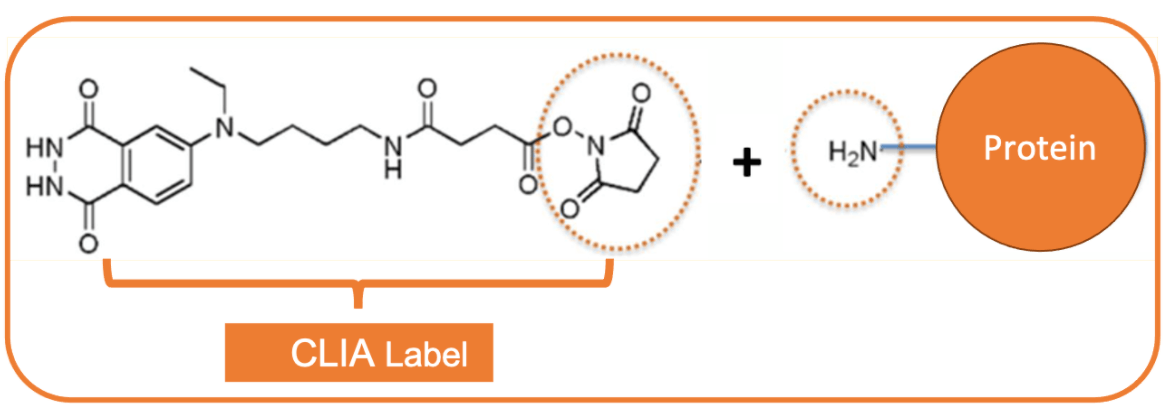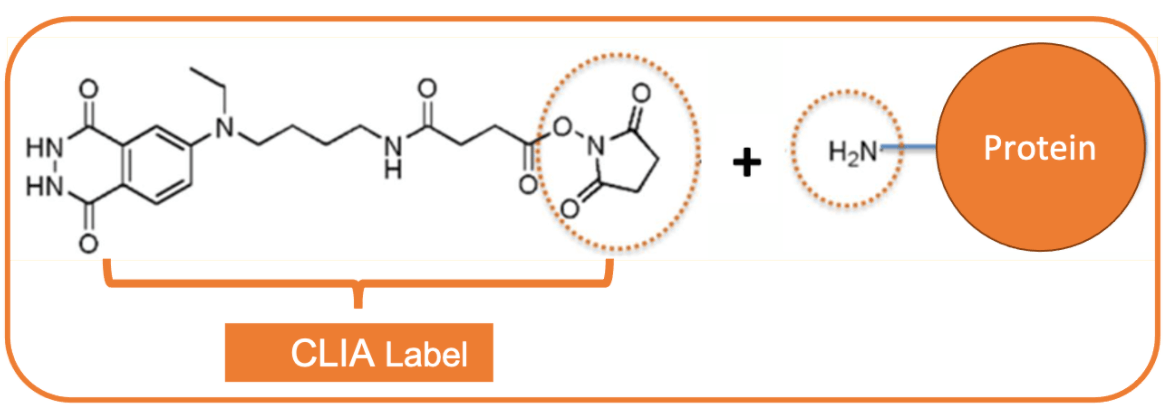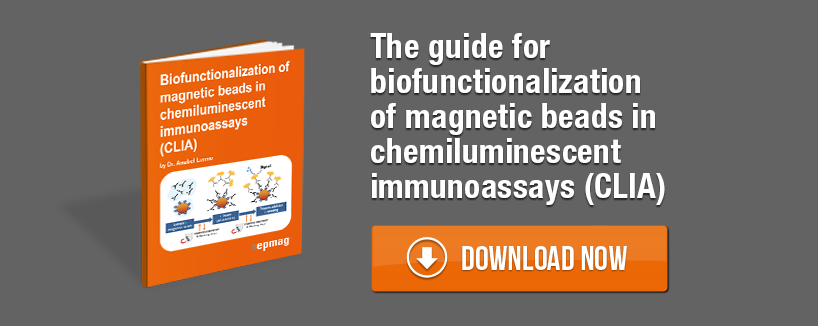Once an optimal CLIA label (also called CLIA tag) is chosen, it must be conjugated to the protein which will bind to the analyte desired to detect. Isoluminol or Acridinium ester derivatives are often used as CLIA tags.

The chemistry of the CLIA-label protein conjugation
Conjugation of a protein with CLIA-label commonly involves labeling a protein with an acridinium ester derivative via an amine group on the protein. Primary amine groups are present on proteins either at the N-terminus of the polypeptide chain or at the end of a lysine amino acid side chain.
These primary amines are often the target of protein labels due to their nucleophilic nature, their propensity to be charged and at exposed regions of a protein conformation. Acridinium ester has the N-hydroxysuccinimide (NHS) ester group at the end, a known amine reactive group. When the reaction occurs, at pH between 7 and 9, the NHS is released and the rest of the ester is turned into an amide bond by binding the protein amine group.

Purification of the CLIA label-protein conjugation
After conjugation, the next step is to remove the free remaining labels and unbound protein. Chromatography is a classic method for separating remaining labels and unbound molecules. With chromatography the separation process can be monitored over time by absorbance and size information is obtained. Dialysis can also be used for separation but provides less information than chromatography and is time consuming.
Considerations for CLIA label-protein conjugation
- Avoiding amine buffers and additives in the protein matrix can minimize interference of the conjugation reaction, which occurs at amine groups on the target protein.
- CLIA labels are highly unstable in aqueous solutions and to maintain its stability storing in organic solvents is best. DMSO or DMF are good examples of organic solvents for longer term storage of the CLIA label.
- Be consistent with concentrations of protein and organic solvents throughout assay development. This will help maintain consistent results even as the proteins change (lot differences) or in scaling up the conjugation process.
- The CLIA-label:protein ratio needs to be optimized to obtain an efficient conjugate. A higher molar or mass ratio, providing higher labelling can lead to insolubility problems and potentially decrease the activity of the protein. This becomes especially important for smaller proteins or haptens.
Optimized CLIA label-protein conjugation
An optimized conjugation of the CLIA label to the target protein can be visualized during chromatography. During fractionation a large peak will appear when your conjugated molecule goes through a filtration column, often based on size exclusion. Finally, when the CLIA performance is tested, the chemiluminescence from the immunoassay will be measured and the success of the conjugation will be assessed.
Related news
- Magnetic beads in Chemiluminescent immunoassay (CLIA)
- Overview on Chemiluminescent immunoassay (CLIA)
- Protein Molarity Calculator




